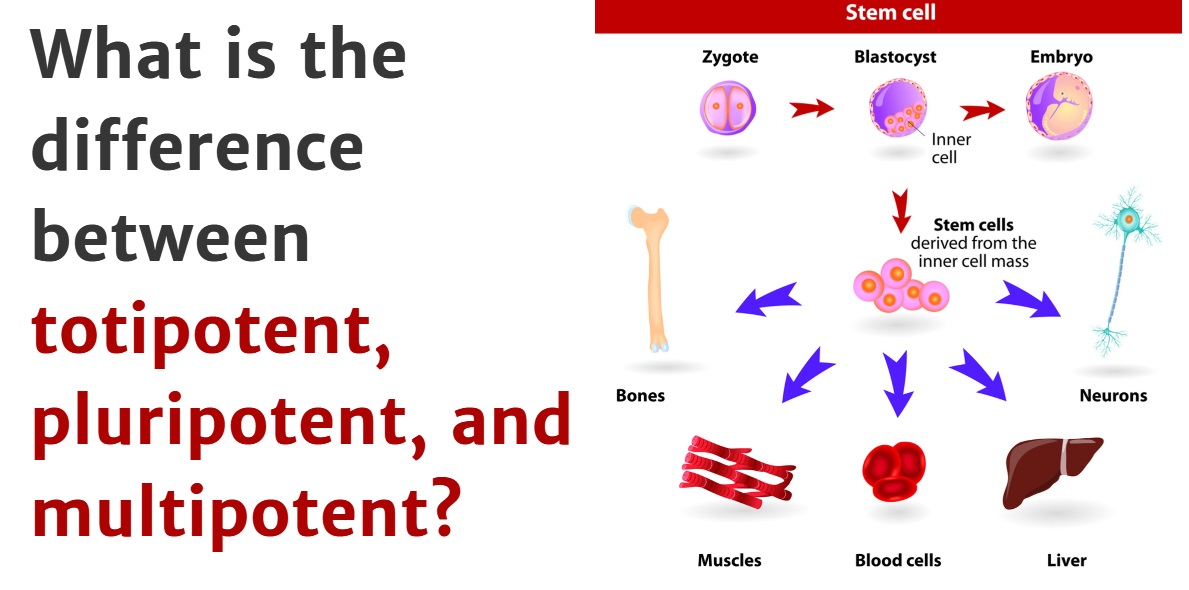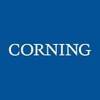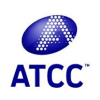|
|
When learning about stem cells, a common question is, what is the difference between totipotent, pluripotent, and multipotent cells? The answer is simple.
The key differences between these cells are:
- When each appears during the process of human development.
- Their degree of “flexibility” to become other cell types.
The key similarity is that all three of these cells types are characterized by self-renewal and the capacity to turn into into mature cell types. Together, they form the 200+ cell types that create a human being.
Let’s dive deeper into these differences below.
Totipotent Stem Cells
Totipotent stem cells are the most versatile stem cell type, because they are formed shortly after fertilization of an egg cell by a sperm cell. They can become all of the cells of the human body, as well as the cells of the embryo and developing fetus.
At about four days into development, these totipotent cells specialize slightly, becoming pluripotent stem cells.
Pluripotent Stem Cells
Pluripotent stem cells can give rise to all of the cell types that form the human body, but are not as versatile as totipotent cells.
Embryonic stem cells (ESCs) are an example of pluripotent stem cells, as are a type of “lab made” stem cell called an induced pluripotent stem cell (iPS cell).
• Embryonic stem cells are controversial, because they are collected from early-stage embryos. Even though the embryo only consists of 100–200 cells at this stage, this limits their use.
• iPS cells are not controversial, because they are made from adult cells. iPS cells are differentiated cells that are reprogrammed back into an embryonic-like state. They are usually created from skin or blood cells.
Both types of pluripotent stem cells can give rise to nearly all of the tissues that form the human body.
Multipotent Stem Cells
Later, multipotent stem cells form, which are again more limited in what they can become. They cells types usually prefer to become cells of a certain class or category.
For example:
• Hematopoietic stem cells (HSCs) are a type of multipotent stem cell that prefer to become cells of the blood and immune system, although it it possible to induce them to become other cell types.
• Mesenchymal stem cells (MSCs) are a type of multipotent stem cell found in bone marrow and fat, among other tissues. Theses cells tend to turn into bone, fat, muscle and cartilage cells.
• Neural stem cells are a type of multipotent stem cells found in the brain. Unsurprisingly, they like to differentiate into neurons, glia, and other similar cells.
In short, multipotent stem cells are more specialized in nature than totipotent or pluripotent stem cells.
Totipotent, Pluripotent, and Multipotent
Below, I summarize these simple differences between totipotent, pluripotent and multipotent stem cells.
Remember, the key differences are when each cell type appears during human development and to what degree they can become other mature cell types.
Treatments Using Totipotent, Pluripotent, and Multipotent Cells
As the world’s largest publisher of stem cell industry news, BioInformant understandably cannot provide clinical treatments or advice. For this reason, please contact GIOSTAR with your medical questions. GIOSTAR is a global stem cell company that has completed over 14,000 treatments for patients in the U.S. and worldwide.
You can reach them at this link to schedule a consultation or ask them your questions.
If you found this blog valuable, subscribe to BioInformant’s stem cell industry updates.



















What are the detailed similarities of tluripotent, multipotent and totipotent cell stems